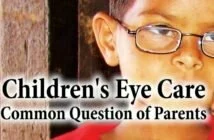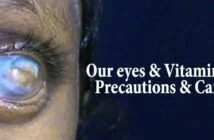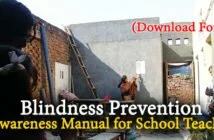A study conducted by Advanced Eye Hospital and published by Times of India in April 2013, reveals some surprising facts about the state of eye care in Navi Mumbai children…
The Study:Advanced Eye Hospital conducted a screening program for over 3500 school kids from ages 3 to 17 years. Our team screened the children in 5 schools over a period of two months.
Our Kids’ Eyes Need Help:The study revealed that about 22% of all kids screened had impaired vision. Refractive errors (near / far sightedness) were responsible for the decrease in vision of 96% of kids… which means that most of these kids could have normal vision if they were prescribed and urged to wear a simple pair of glasses. Rest 4% were comprised by more serious issues like squint and retinal problems.
Our Kids Fail To Get Proper Help:About 52% of the kids were not even aware that they had troubles with their vision. Of the remaining 48% kids who were aware that they needed glasses, 36% of these were still not using glasses. This shows that a huge majority of our kids are going around with defective vision and hence an incomplete physical, social, intellectual and emotional development… all this despite living in an advanced city like Navi Mumbai.
How We Are Responsible For The Situation:We enquired of these children as to why they did not wear their glasses. The kids came up with varying reasons like friends teasing, discomfort / headache due to glasses, cosmetic blemish, not informed their parents, hampers outdoor activities, monetary constraints, broken glasses and ignorance by the parents. What was most surprising was that 64% of these kids reported parents who had not given due importance to their kid’s complaints.
What are the common eye diseases in kids that one should be aware of?
- Refractive errors mean that the shape of the eye doesn’t bend, light properly, so images appear blurred. Nearsightedness is the most common refractive error in school-age children; others include farsightedness and astigmatism:
Nearsightedness is poor distance vision, which is usually treated with glasses or contacts.
Farsightedness is poor near vision, which is usually treated with glasses or contacts.
Astigmatism is imperfect curvature of the front surface of the eye, which is usually treated with glasses if it causes blurred vision or discomfort.
- Amblyopia (“lazy eye”) is poor vision in an eye that may appear to be normal. Two common causes are crossed eyes and a difference in the refractive error between the two eyes. If untreated, amblyopia can cause irreversible visual loss in the affected eye. (By then, the brain’s “programming” will ignore signals from that eye.) Amblyopia is best treated during the preschool years.
- Strabismus is a misalignment of the eyes; they may turn in, out, up, or down. With early detection, vision can be restored by patching the properly aligned eye, which forces the misaligned one to work. Surgery or specially designed glasses also may help the eyes to align.
- Retinopathy of prematurity is a disease that affects the eyes of premature babies.
- Retinoblastoma is an eye cancer that usually appears in the first 3 years of life. The affected eye or eyes may have visual loss and whiteness in the pupil.
- Cataracts can occur in new born babies. A cataract is a clouding of the eye’s lens. (Yes, Cataracts can occur in kids too! It’s not just a disease of the old.)
- Glaucoma in infants is a rare condition that may be inherited. It is the result of incorrect or incomplete development of the eye drainage canals before birth and can be treated with medication and surgery.
But how would one know if something is wrong with one’s kid’s eyes?
Your child’s behaviour may often drop subtle hints that all is not well. Your child may have an eye problem if he shows any of the following signs:
- constant eye rubbing
- extreme light sensitivity
- poor focusing
- poor visual tracking (following an object)
- abnormal alignment or movement of the eyes (after 6 months of age)
- chronic redness of the eyes
- chronic tearing of the eyes
- a white pupil instead of black
In school-age children, watch for other signs such as:
- inability to see objects at a distance
- inability to read the blackboard
- squinting
- difficulty reading
- sitting too close to the TV
31% of our population is under 15 years of age. Kids truly are the light of our future and this study is an eye opener on the state of child eye care in Navi Mumbai.



